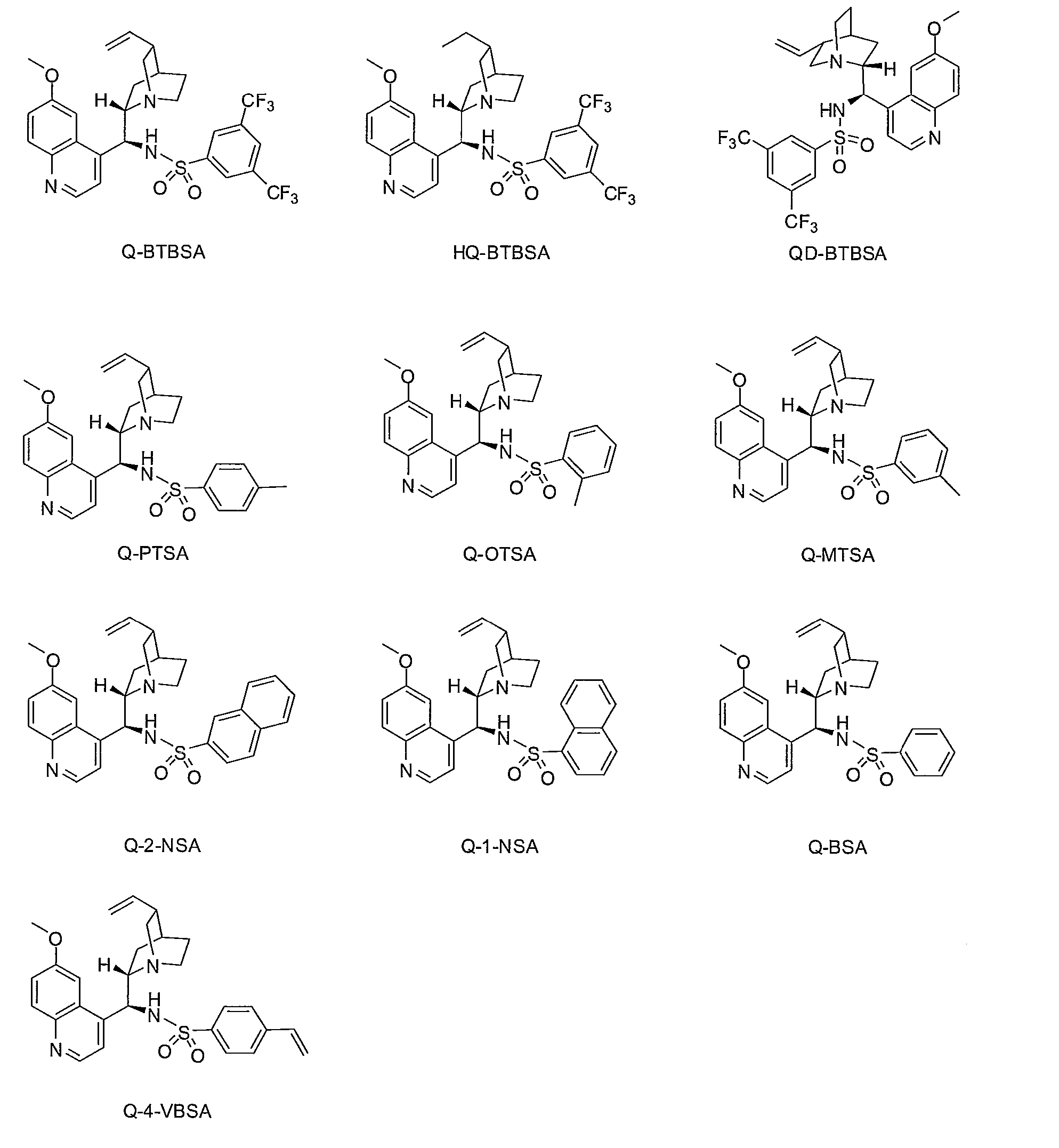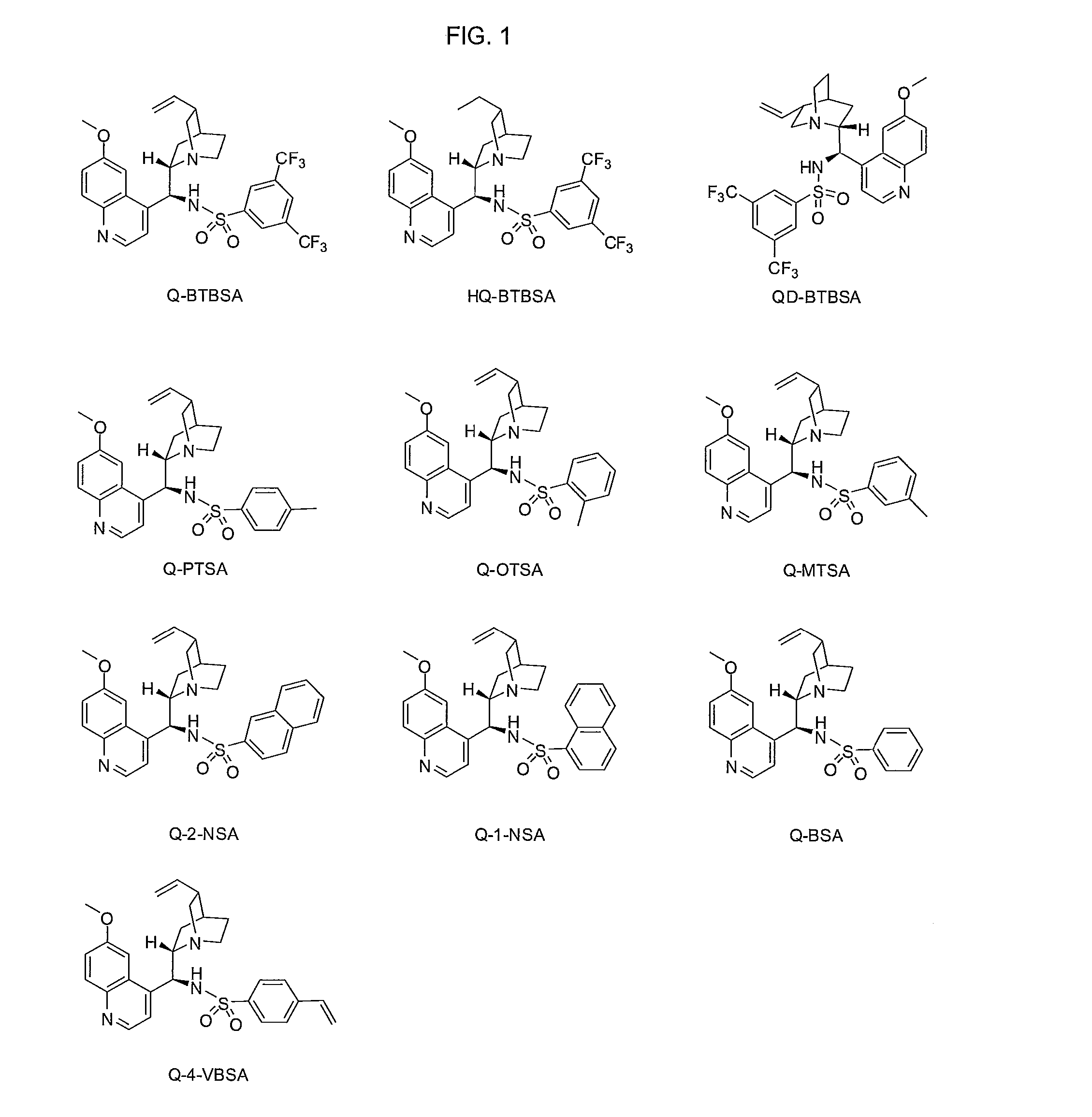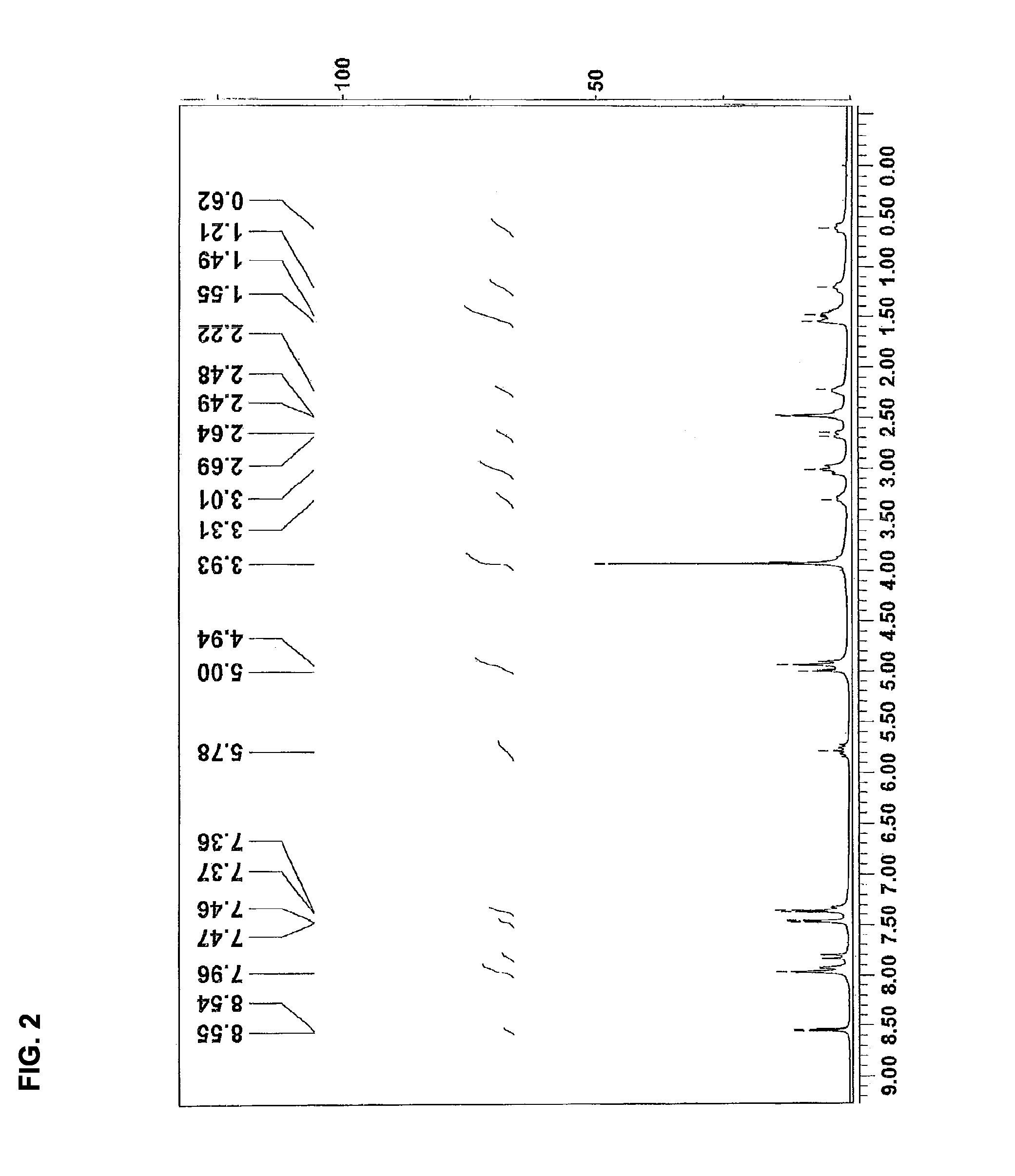Cinchona-based bifunctional organocatalysts and method for preparing chiral hemiesters using the same
a bifunctional organocatalyst and chiral hemiester technology, applied in the field of chiral hemiester preparation methods, can solve the problems of time as long as 4 days, low yield and waste, and structural limitations, and achieves low toxicity, high industrial usefulness, and easy availability
- Summary
- Abstract
- Description
- Claims
- Application Information
AI Technical Summary
Benefits of technology
Problems solved by technology
Method used
Image
Examples
example 1
Preparation of Q-BTBSA (Quinine-(bis)-3,5-Trifluoromethyl benzene Sulfonamide) catalyst
[0151]3,5-Bis(trifluoromethyl)benzene sulfonyl chloride (3.42 g, 10.94 mmol) was added to a solution of amine (I) (3.54 g, 10.94 mmol) in anhydrous methylene chloride (50 mL) under argon at room temperature, and then triethyl amine (1.52 mL, 10.94 mmol) was added thereto. The mixed solution was stirred overnight at room temperature, distilled water (30 mL) was added thereto and stirred for 10 minutes to separate organic layer. The organic layer was dried with Na2SO4 and concentrated. The residue was purified by silica gel column chromatography (5% methanol in ethyl acetate) to obtain Q-BTBSA (5.9 g, 89.5%) as white solid.
[0152]1H NMR (300 MHz, d6-DMSO, 110° C.) δ 0.58-0.65 (m, 1H), 1.18-1.25 (m, 1H), 1.33-1.67 (m, 3H), 2.14-2.31 (m, 1H), 2.45-2.52 (m, 1H, overlapped with DMSO), 2.60-2.73 (m, 1H), 2.88-3.13 (m, 2H), 3.20-3.40 (m, 1H), 3.93 (s, 3H), 4.91 (t, J=1.5, 0.5H), 4.97 (td, 3J=17.1, 3J=1.5, ...
example 2
Preparation of Q-Salt-BTBSA (Quinine-Salt-(bis)-3,5-Trifluoromethyl benzene Sulfonamide) catalyst
[0155]Q-BTBSA catalyst of Example 1 (1.00 g, 1.67 mmol) was added to 35% HCl (0.34 g, 3.34 mmol), and then water is evaporated. The residue was vacuum drying to obtain Q-Salt-BTBSA (1.12 g, 100%) as yellow solid
[0156]1H NMR (300 MHz, d6-D20, 80° C.) □ 01.49-1.58 (br, 1H), 2.32-2.39 (br, 1H), 2.56-2.57 (m, 3H), 3.41-3.46 (br, 1H), 3.92-4.06 (m, 2H), 4.34-4.47 (m, 3H, overlapped with D20), 5.68-5.88 (m, 2H), 6.25-6.42 (m, 1H), 7.83 (m, 1H), 8.16-8.19 (m, 1H), 8.32-8.51 (m, 5H), 9.33-9.37 (m, 1H)
example 3
Preparation of QD-BTBSA (Quinidine-(bis)-3,5-Trifluoromethyl benzene Sulfonamide) catalyst
[0157]3,5-Bis(trifluoromethyl)benzene sulfonyl chloride (1.83 g, 5.84 mmol) was added to a solution of amine (II) (1.89 g, 5.84 mmol) in anhydrous methylene chloride (50 mL) under argon at room temperature, and then triethyl amine (0.9 mL, 6.4 mmol) was added thereto. The mixed solution was stirred overnight at room temperature, distilled water (30 mL) was added thereto and stirred for 10 minutes to separate organic layer. The organic layer was dried with Na2SO4 and concentrated. The residue was purified by silica gel column chromatography (5% methanol in ethyl acetate) to obtain QD-BTBSA (2.69 g, 76.8%) as white solid.
[0158]1H NMR (300 MHz, d6-DMSO, 80° C.) 0.87-0.89 (m, 2H), 1.44-1.53 (m, 3H), 2.17-2.24 (m, 1H), 2.58-2.89 (m, 4H), 3.22-3.25 (m, 1H), 3.95 (s, 3H), 4.98-5.07 (m, 3H), 5.78-5.89 (m, 1H), 7.35-7.47 (m, 3H), 7.83-7.87 (d, J=9.1 Hz, 1H), 8.02-8.04 (m, 3H), 8.57-8.59 (d, J=4.5 Hz, 1H...
PUM
 Login to View More
Login to View More Abstract
Description
Claims
Application Information
 Login to View More
Login to View More - R&D
- Intellectual Property
- Life Sciences
- Materials
- Tech Scout
- Unparalleled Data Quality
- Higher Quality Content
- 60% Fewer Hallucinations
Browse by: Latest US Patents, China's latest patents, Technical Efficacy Thesaurus, Application Domain, Technology Topic, Popular Technical Reports.
© 2025 PatSnap. All rights reserved.Legal|Privacy policy|Modern Slavery Act Transparency Statement|Sitemap|About US| Contact US: help@patsnap.com



